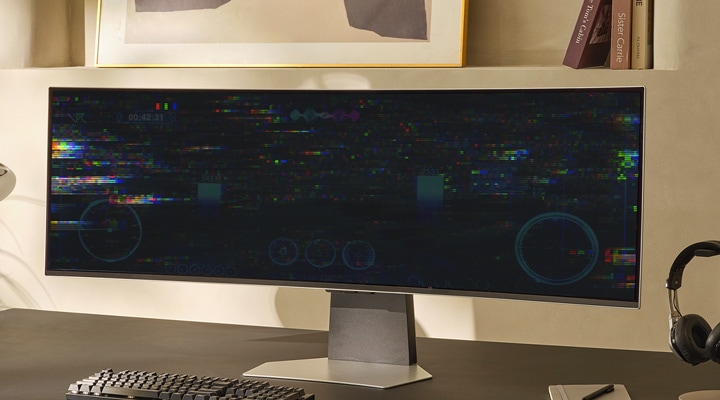Samsung Monitor: Distorted, Ghosted, or Flickering Display
Encountering visual irregularities on your Samsung monitor can disrupt productivity and strain the viewing experience. This guide addresses common issues such as distortion, ghosting, and flickering, offering practical solutions to restore optimal display performance.

Unplug the cable at both ends (you can do this while the monitor is still turned on), and check the ends for damage. Also, check the cable itself, and make sure it is not pinched between anything, like the desk and the wall, or under a chair leg.
- If there is no damage, plug the cable back in, make sure it's securely connected, and then see if the flickering stops.
- If there is damage, or if the flickering continues after plugging the cable back in, replace the cable with one that works (either a new one or one that you've tested with other devices).
Flickering can also be caused by an unstable or inconsistent power supply. Try plugging the monitor into a different outlet. If the flickering stops, there may be too many appliances plugged into the original circuit or an inconsistent voltage from the outlet. Contact an electrician for further assistance.
If the monitor is connected to a computer, it's important to keep the graphics driver up to date.
A basic driver is usually available through the operating system's updates. Alternatively, you can go to the website of the card's manufacturer for the most up-to-date driver. You can check for firmware updates for your monitor as well.
- Refresh rate is how many times per second your monitor displays an image. Higher values result in a smoother picture, but if you select a value that your monitor does not support, it can cause flickering, stretching distortion, or a black screen. For an optimum experience, set this to the highest value that your monitor and connected device will both support.
- Your monitor's native resolution is the one it is designed to use and will offer the best picture quality and experience. If items are too large or small, we recommend adjusting the scale of items in your operating system instead of changing the resolution. However, if necessary, resolutions that have an equal ratio as the native resolution will perform better than other resolutions, which will appear stretched or distorted.
The on-screen menu is a quick way to check the monitor. If the on-screen menu is fine, so is the monitor. Some monitors also have a Picture test (found by navigating to Settings (All Settings) > Support > Self Diagnosis ( Device Care > Self Diagnosis) then select Picture Test).
You may not be able to open the on-screen menu on an older monitor. Instead, you can disconnect it from all video signals and wait for an error message to appear.
- If the menu or the error message does not have the issue (distortion, flickering, etc.), then the monitor does not need service. The issue is caused either by the connected device or the cable. (See the previous steps for a resolution.)
If the menu or messages also have quality issues, or if the monitor is still flickering, visit our Support Center to request service.
Note: If you require further assistance, please contact our Contact Center experts.
Thank you for your feedback!
Please answer all questions.